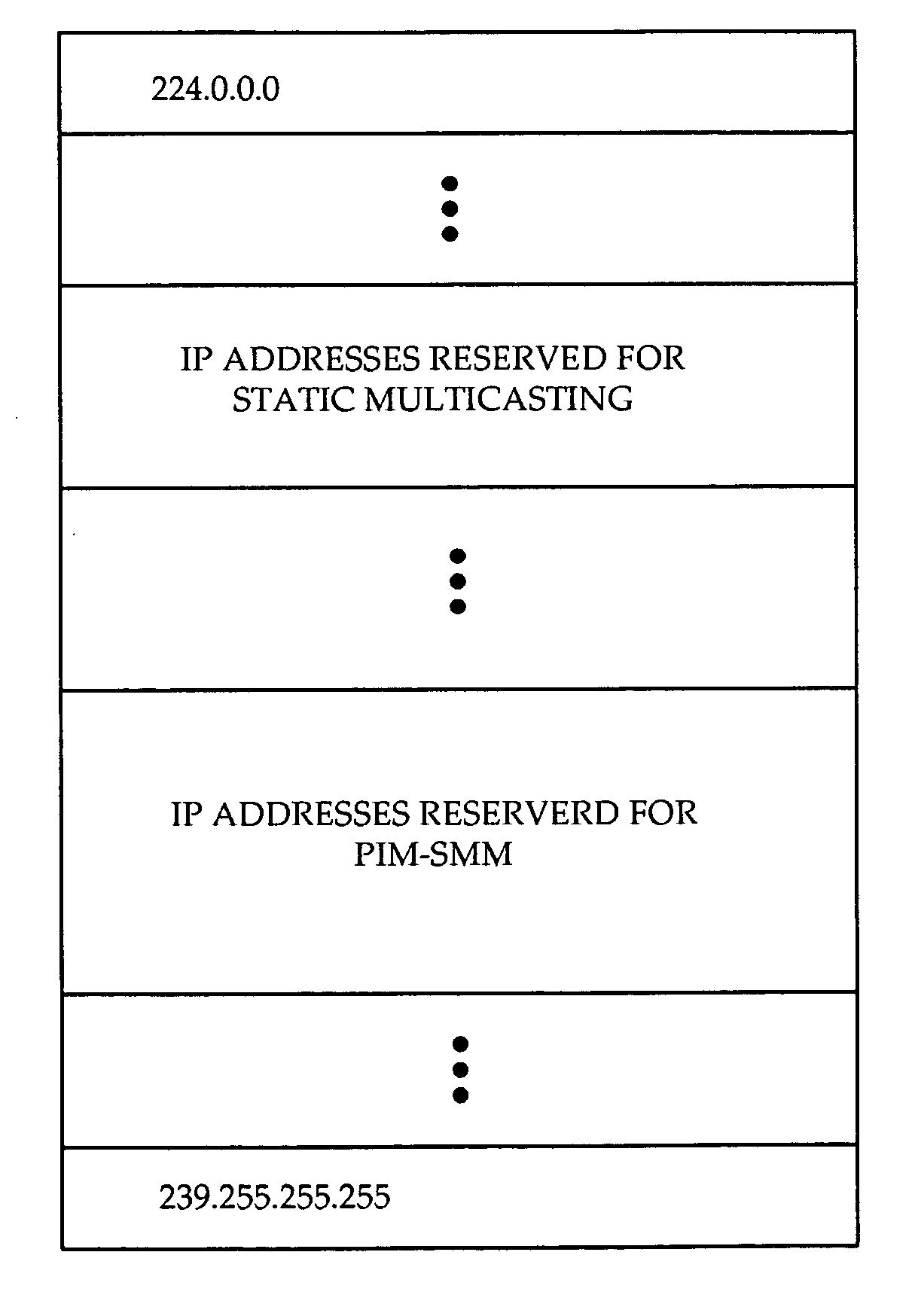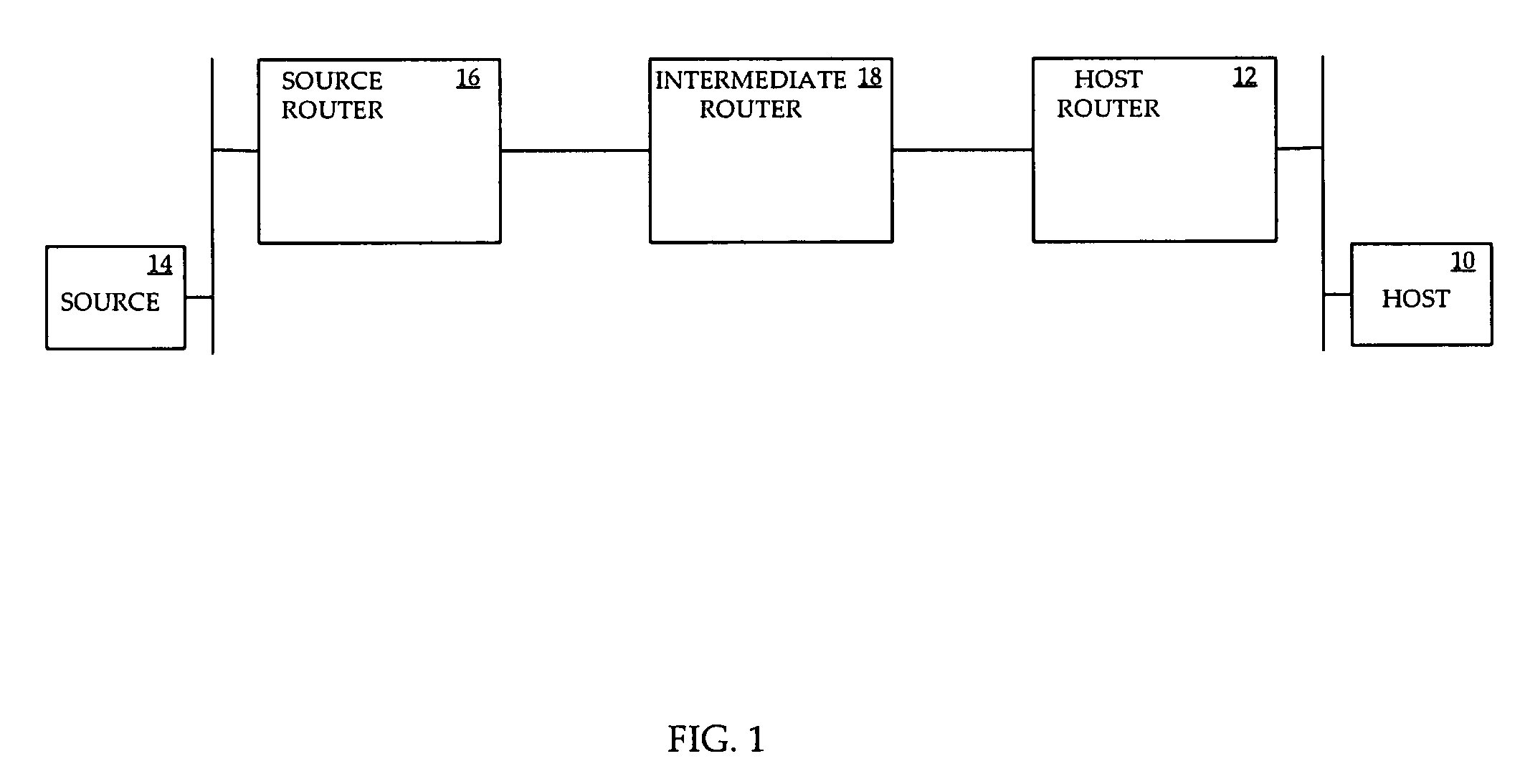Co-existing static and dynamic IP multicast
a static and dynamic ip multicast and co-existing technology, applied in the field of ip multicasting, can solve the problems of inability to provide channel surfing
- Summary
- Abstract
- Description
- Claims
- Application Information
AI Technical Summary
Benefits of technology
Problems solved by technology
Method used
Image
Examples
Embodiment Construction
[0024] Referring to FIG. 1, a block diagram of a portion of an example communication network is shown. A host 10, operated by a user, is connected to the network through a host router 12. The host 10 may be any device capable of requesting and receiving IP multicast traffic, such as a set top box (STB). A multicast source 14 is connected to the network through a source router 16, and offers IP multicast content for multicast group G1. The host router 12 and the source router 16 communicate through an intermediate router 18. The layout of FIG. 1 is for example purposes only, and more generally there may be a plurality of hosts, a plurality of host routers, a plurality of sources, a plurality of source routers, and a plurality of intermediate routers between host routers and source routers. The source typically offers content in more than one multicast group.
[0025] Referring to FIG. 2, a diagram of Class D IP addresses is shown. Class D IP addresses are reserved for IP multicasting, ...
PUM
 Login to View More
Login to View More Abstract
Description
Claims
Application Information
 Login to View More
Login to View More - R&D
- Intellectual Property
- Life Sciences
- Materials
- Tech Scout
- Unparalleled Data Quality
- Higher Quality Content
- 60% Fewer Hallucinations
Browse by: Latest US Patents, China's latest patents, Technical Efficacy Thesaurus, Application Domain, Technology Topic, Popular Technical Reports.
© 2025 PatSnap. All rights reserved.Legal|Privacy policy|Modern Slavery Act Transparency Statement|Sitemap|About US| Contact US: help@patsnap.com



